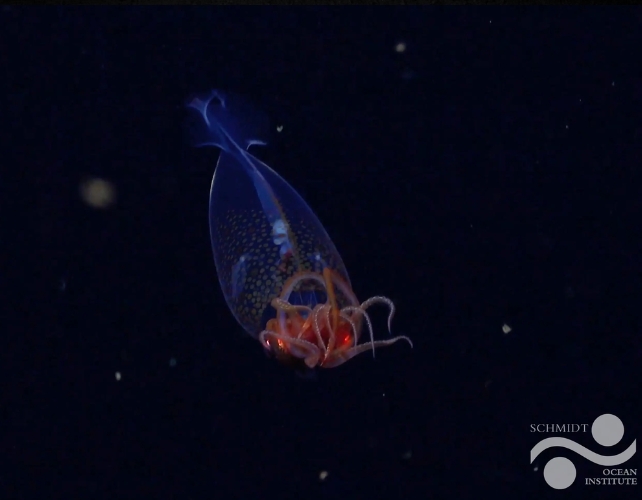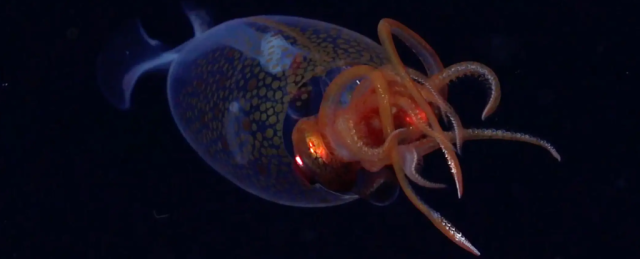The colossal squid, a mysterious creature lurking in the Antarctic abyss, has finally made a cameo, a cohort of scientists say.
You may have heard of the giant squid, which is famous from mariners’ legends and for its epic battles with sperm whales.
The colossal squid is even bigger and more mysterious. It’s so elusive, living in the deep ocean near Antarctica, that scientists didn’t even know it existed until 100 years ago.
frameborder=”0″ allow=”accelerometer; autoplay; clipboard-write; encrypted-media; gyroscope; picture-in-picture; web-share” referrerpolicy=”strict-origin-when-cross-origin” allowfullscreen>
Since then, fishermen have filmed a few dying colossal squids at the ocean’s surface. Scientists have found chewed-up colossal squid in whale and seabird stomachs.
Nobody had confirmed a sighting in the deep sea until now.
The footage below is the first to ever show a living colossal squid in its natural habitat, according to the researchers who captured it and two squid experts who verified it.
This animal is the world’s heaviest invertebrate, growing up to 23 feet long and 1,100 pounds. The one in this video, though, is just under one foot long. It’s a baby.
The video was captured on March 9 by a remotely operated subsea vehicle called SuBastian, operated by a crew aboard a research vessel called “Falkor (too).” It was at a depth of about 600 meters (1968 feet).
The researchers on the vessel were conducting a 35-day expedition near the South Sandwich Islands. It was a mission of the Ocean Census, which is an international scientific collaboration to search for new marine life.

Rare squid discovery: ‘I started hyperventilating’
Kat Bolstad, a squid researcher at the Auckland University of Technology, helped verify the footage. She had previously reassembled a dead colossal squid caught by a fishing vessel.
“This is honestly one of the most exciting observations that we’ve had across the time I’ve been working on deep-sea cephalopods,” Bolstad said in a press briefing announcing the new footage on Tuesday.

“This is a great example of the beauty of many deep-sea animals,” she added.
Aaron Evans, an expert in the glass squid family to which colossal squids belong, helped Bolstad identify the creature in the video. They knew it was a colossal squid once they saw hooks on the middle of its eight arms. That’s a distinctive feature that differentiates colossal squids from other species in the glass squid family.
When they saw the arm hooks, Evans said in the briefing, “I started hyperventilating.”
Another Antarctic expedition in 2023 captured footage of what scientists thought may have been a juvenile colossal squid, but researchers were uncertain.
In the new video, though, “we can see the animal’s features in really great detail,” Bolstad said.
Colossal squids are unique in other ways, too. They have hooks on their two tentacles, too, and those hooks can rotate 360 degrees to grab onto prey. They also have the largest eyes of any animal ever studied – living or extinct – probably to help them see in the depths of the ocean.
In the video, Bolstad said, “you can see the iridescent shine off the eyeballs.”
This article was originally published by Business Insider.
More from Business Insider:
{loadposition businessinsiderfeed}










